See the Forest for the Trees is a remarkable artistic partnership between Spare Parts, the Southwest School of Art Teen Program (aka Bee Nation), and AP Art Lab. Members of Bee Nation decided they wanted to make a statement with a project for this year’s Contemporary Art Month (CAM). Under the guidance of Spare Part’s Founder and Director Mary Elizabeth Cantú 15 students collectively envisioned a large tree demonstrating the connection of art to the environment. “The theme of the exhibition revolves around the environment, material culture and waste,” explained Cantú. “Because, it’s not waste until we waste it.” Teen Program Coordinator and international installation, performance, and video artist, Julia Barbosa-Landois guarantees, “you will be wowed by this innovative installation made by local teens.”
Cardboard is everywhere. It’s used to package over 85 percent of all products sold in the United States. Seemingly innocuous, cardboard is the single largest component of municipal solid waste around the world. Cardboard and paper waste make up 41% of the solid waste stream. According to this informative web article one ton of recycled cardboard saves:
- 390 kWh hours of electricity
- 46 gallons of oil
- 6 million Btu’s of energy
- 9 cubic yards of landfill space
It’s all about imagination and creativity
Using over 400 square feet of discarded cardboard and reclaimed materials such as reused cardboard, plastic, paper and found objects from their homes and schools, Bee Nation students created this colorful, decorative tree to ‘uncover the aesthetics of detritus and reexamine their relationship with the discarded.’ Celia realized, “Until we did this project I had no idea the amount of trash we make as a society. It kind of freaked me out.” The student artists worked on their project beginning in January. First came the design and then the construction of the trunk and branches. Truly a tree of life there is a cornucopia of multimedia vignettes worth your while to give up close perusal. “Coming from a home of six people, we always have a LOT of toilet paper rolls. I learned that they can make really cool flower designs if you just alter their shape. That goes for all scraps of trash,” explained Alexis.
Someone said this to me the other day and it’s pretty on point - “Art is about transformation.”
The resulting installation gives used cardboard a new life that honors its forest origins. “We didn’t know how it would look until it all came together during the installation,” said Bee Nation’s Elizabeth. Amanda Poplawsky, offered her AP Art Lab Studio located at 1906 South Flores for the exhibition. “I love working with youth in connection with social issues and activism,” she states. The above picture shows the tree from the front with closer views of some of the amazing details that went into the artistic construction. No wonder this installation won a Contemporary Art Month Cammie-the R. Mutt Award for Novel media turning something that isn’t art into art (see below photo with Cantú and Poplawsky) (March, 2016).
Cantú added, “Through this project I hope our artists are compelled to continue this type of art making. I hope these students see how their work can inspire and educate the community. Finally, I hope they understand that it doesn’t matter how young or young at heart you are, you have the ability to make positive change in the world.” This Tree of Life represents the hope for a healthier, more sustainable future. Because, there’s no such thing as thrown away!
Spare Parts is SA2020 nonprofit partner and this event was “Awesome Certified.”

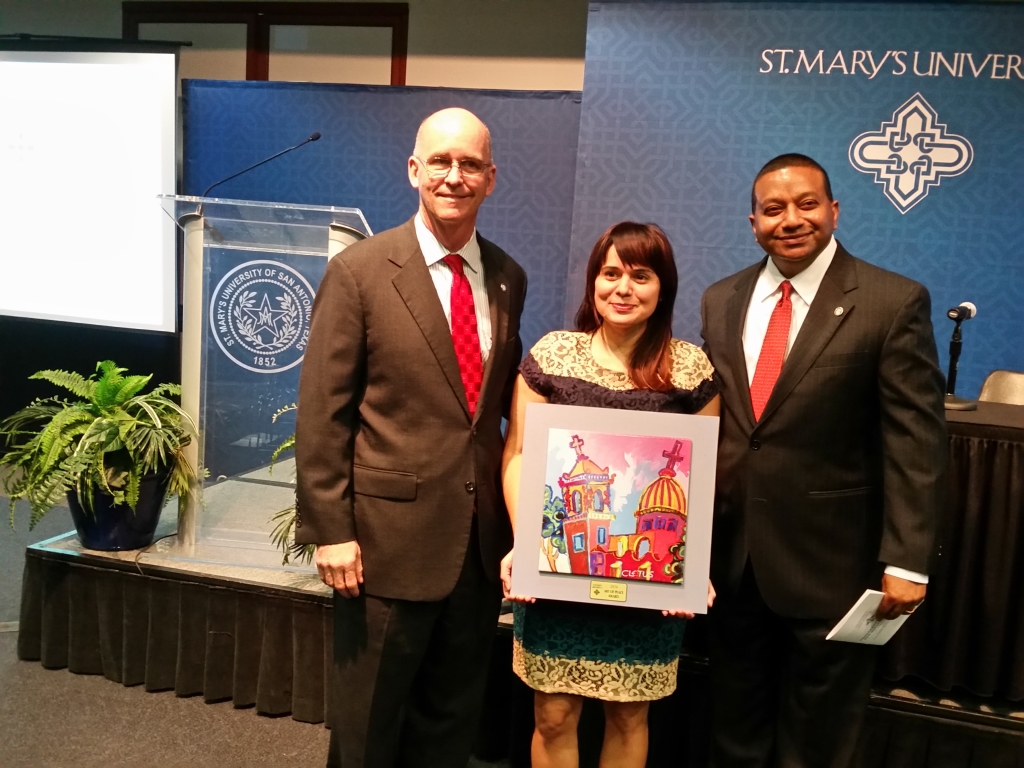
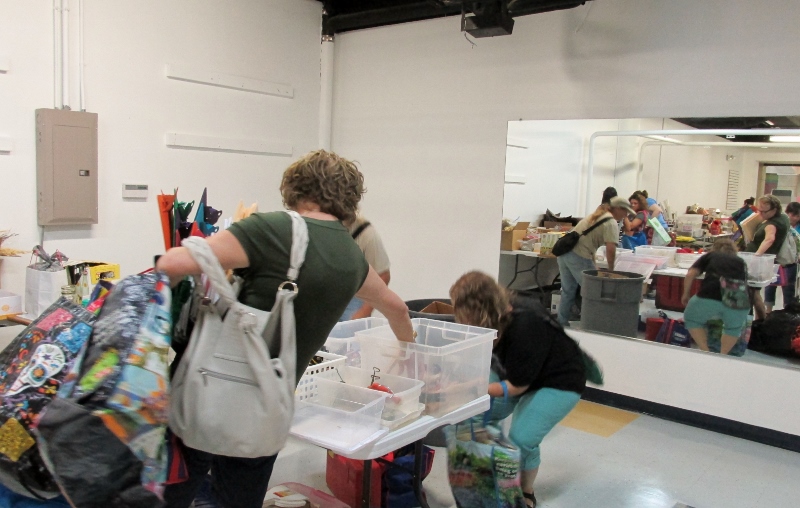
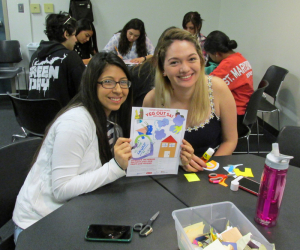 After the presentation, students attended a workshop where Cantú detailed various spare parts projects. “Truth is: there is no such thing as throwing something away,” she said, challenging the students to give a second and even third look before tossing stuff in that trash can. Students were asked to decorate a sign reminding them that “Trash is the failure of imagination (Aaron Kramer).” All materials used in spare parts workshops and projects are donated ‘leftovers’ from businesses and individuals.
After the presentation, students attended a workshop where Cantú detailed various spare parts projects. “Truth is: there is no such thing as throwing something away,” she said, challenging the students to give a second and even third look before tossing stuff in that trash can. Students were asked to decorate a sign reminding them that “Trash is the failure of imagination (Aaron Kramer).” All materials used in spare parts workshops and projects are donated ‘leftovers’ from businesses and individuals.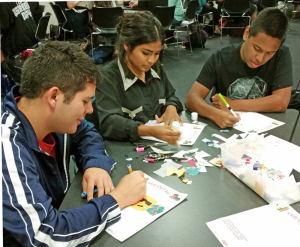
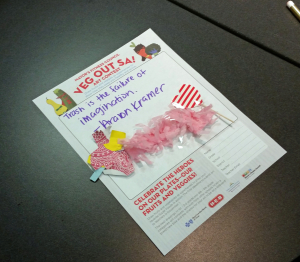
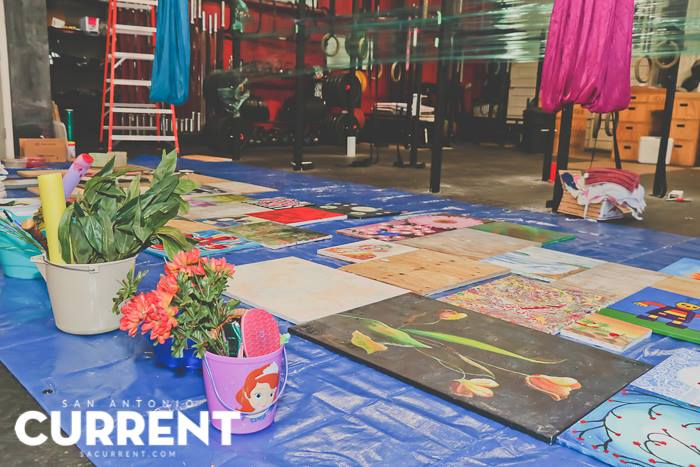
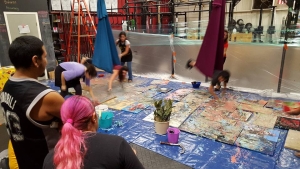 But spare parts advisory board members Santiago and Carla Berryman (who helped write the proposal) have no problem with not only accepting, but embracing, the non-traditional art experience. Currently serving as Director/Co-Chair Contemporary Art Month San Antonio, Hassele joined the team to bring her considerable experience and talents to the project. The result is the creation of a unique, free-form artistic experience which speaks to children and adults alike.
But spare parts advisory board members Santiago and Carla Berryman (who helped write the proposal) have no problem with not only accepting, but embracing, the non-traditional art experience. Currently serving as Director/Co-Chair Contemporary Art Month San Antonio, Hassele joined the team to bring her considerable experience and talents to the project. The result is the creation of a unique, free-form artistic experience which speaks to children and adults alike.